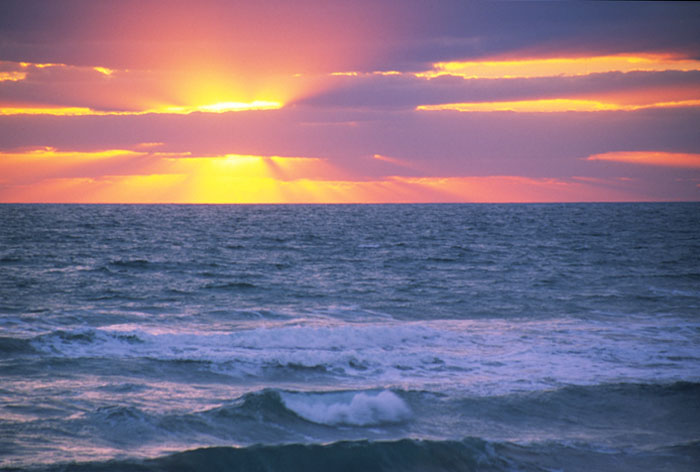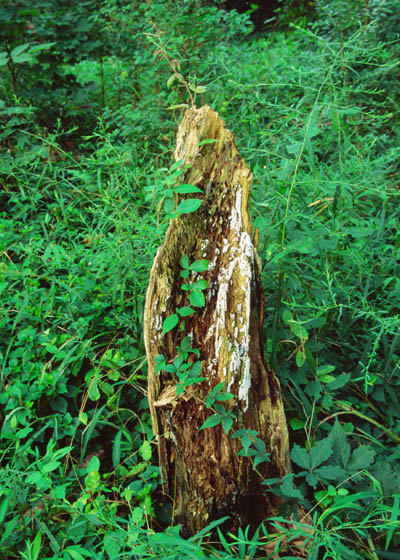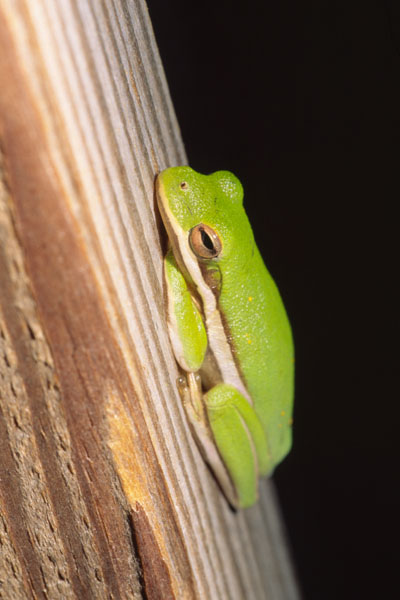
This is a topic that’s hard to illustrate effectively, so in order to fully appreciate it, you’re going to have to do at least one outside exercise yourself. But let’s start with, do you do any photography yourself? If yes, good! Now, do you have a film camera? It’s my suspicion that a pretty good percentage of answers (if I actually had readers, anyway) would be, “no.” And to that I say, “Why the hell not?”
I’ve been through the majority of answers to that – I used to be active on several photography forums as digital cameras made their big splash. And I have to admit I was never convinced by those answers. I shoot digital now, and have for several years, so I have personal experience with all of those answers firsthand. And it’s why I don’t shoot exclusively digital (if you were fooled by the statement, “I shoot digital now,” into thinking that it was the only format I used, shame on you.) If you want a breakdown of many of those arguments, I covered them on a dedicated page here.
If you, however, have never run a roll of slide film through a film camera, all I can say is, do it now. There’s a whole other world of photography that you haven’t tried yet. The colors, the vibrancy, the sharpness – I’m not one for enthusing over things, I think it simply makes one sound overexuberant and chases people off, but all these have to be seen. And yes, I hear the argument: “But you can get all of those things from digital! And you can even alter them to your liking on the computer!” I usually hear those things from people who virtually never shoot film, so I’m not really sold on their experience. Just try it first. Come back and tell me I’m wrong if you like.
Now, I can’t illustrate this too effectively for you, no matter how I might try, because this is a digital interface. Everything I display on the blog or website has to be digitized – scanned from the original slide. And this introduces three major handicaps. The biggest by far is something called 24-bit color, which is the default display on most systems and software right now. In essence, you have three color registers (either red, green, & blue, or cyan, magenta, & yellow – RGB or CMYK respectively) and 256 values in each of those. Everything has to be rendered into those registers. And while this might seem like a lot, it doesn’t compare to the analog color of emulsions, which can cover much greater ranges. So subtleties can be lost when converting to digital.
The second handicap is color rendition. Scanners can have issues with different films, in that they don’t seem to recognize the neutral starting point, what we tend to think of as “white light.” So they can scan a slide and produce something that looks very dissimilar from the slide itself, and then the operator has to perform corrections to get this back on track. This can take a pretty good amount of experience, and I routinely re-examine my slide scans and tweak the colors in different ways.
And finally, there is no such thing as a color digital sensor. No, seriously. All they measure is light intensity, how bright the light they receive is, and this applies to both digital cameras and film scanners. But the “image” they get is monochrome. In order to make it color, you have to do the same thing as holding a sheet of colored plastic in front of a B&W TV. That’s right – individual pixels actually have color filters over top of them. Software later interprets this the best it can and converts the image into a smooth field of the similar colors, rather than (like your computer monitor) a matrix of alternating color dots. The end result of this is, you’re stuck with the color filters that the scanner has built into it.
 You’re stuck with it for particular film types, too – it’s built into the emulsion. But not all films are the same, and you can switch between ones good for skin tones and ones that make colors pop, ones good for foliage and ones good for low light. Slide films are by far the best for vibrant colors and richness. And they also have traits you may not like at first, like higher contrast and slow ISO ratings. Casual photographers may find they produce a lot of shots they simply throw out.
You’re stuck with it for particular film types, too – it’s built into the emulsion. But not all films are the same, and you can switch between ones good for skin tones and ones that make colors pop, ones good for foliage and ones good for low light. Slide films are by far the best for vibrant colors and richness. And they also have traits you may not like at first, like higher contrast and slow ISO ratings. Casual photographers may find they produce a lot of shots they simply throw out.
You see, that’s actually a benefit. Because it makes us slow down and consider the conditions, and what we’re doing with the camera, before we take the shot. For instance, Fuji Velvia 50 is a fine-grained, ISO 50 slide film that has very high contrast. It doesn’t do well in very bright light conditions, because that’s high contrast too, and it can make shadows go completely black. And it forces slower shutter speeds because that ISO rating means it needs more light. But then you see the colors and sharpness it produces, the green leaves and red flowers and blue sky that practically assault your eye, and you’re blown away. So you pay attention to the lighting, and you use a tripod, and a fill-flash or reflector. And you compose your shot, rather than simply grabbing it quickly and thinking you’ll correct it later in Photoshop. Because, trust me, unless you want to hand-paint an image, there’s nothing you can do about details or colors that you never actually caught in the digital image in the first place. They don’t exist to enhance. It’s like enhancing a white piece of paper – what are you gonna do with it?
See that image at top? Yes, it’s been scanned, and trust me when I say it lost something in the process (or you can come by to visit and I’ll show you the slide.) It also is something I probably never could have caught on a digital camera. None that I’ve ever used could handle color rendition in bright highlights very well, so those colors in the sky, with their nice transitions into shadow, tend to lose a lot. I’ve also had really rotten luck with fall foliage in digital, but not with slide film.
Now, of course, comes the stumbling block: too few labs are even processing slide film anymore. In my area (the “Triangle” of Raleigh/Durham/Chapel Hill, NC) there are only a couple of labs in the three-city area that do it, and even fewer of those that hire competent help – I stopped using one because they scratched the film too much. But, long ago, I started using processing mailers, and while it takes a week or so to see the results, they’re also inexpensive and do quality work. The two that I use the most are Fujicolor Processing (handled through Dwayne’s Photo in Kansas) and A&I Color labs in California.
A lot of people seem to think that this means film and processing will soon no longer be available, but there’s two reasons this is wrong. The first is that, there’s still too much demand for film, for just the reasons I outlined above. Fuji has even recently reworked two of its popular emulsions. And the second is that, when you start using it, you and I are going to increase that demand ;-)
 And what films? Well, it depends on your preferred subject. For nature & wildlife, I use all Fuji stock: Provia 100F as a general purpose film, good color and sharpness, fairly high contrast, able to be pushed (which means, exposed and processed at a higher ISO than the rated 100); Velvia 50, simply the sharpest and brightest color film on the market, especially for greens, but very high contrast; and Astia/Sensia 100 (they’re the same thing, Astia is just shipped at an optimum time for the emulsion – it’s a professional/anal thing,) much lower contrast but still with good color, able to be used on bright sunlit days and on people, which I wouldn’t recommend the others for. There are others which perform well too, like the new Provia 400X and Velvia 100F – you probably couldn’t find anything wrong with these either. Other photographers I know prefer the Kodak Elite Chrome series, and these might be more to your liking.
And what films? Well, it depends on your preferred subject. For nature & wildlife, I use all Fuji stock: Provia 100F as a general purpose film, good color and sharpness, fairly high contrast, able to be pushed (which means, exposed and processed at a higher ISO than the rated 100); Velvia 50, simply the sharpest and brightest color film on the market, especially for greens, but very high contrast; and Astia/Sensia 100 (they’re the same thing, Astia is just shipped at an optimum time for the emulsion – it’s a professional/anal thing,) much lower contrast but still with good color, able to be used on bright sunlit days and on people, which I wouldn’t recommend the others for. There are others which perform well too, like the new Provia 400X and Velvia 100F – you probably couldn’t find anything wrong with these either. Other photographers I know prefer the Kodak Elite Chrome series, and these might be more to your liking.
The upside to this is, film cameras have dropped to an all-time low in prices, both new and used – even medium-format gear (much larger slides/negatives) have become affordable, rather than exorbitantly overpriced as it’s been for decades.
So, give it a shot – you have nothing to lose. If you really don’t like it after giving it a fair go, I’m here to be blamed, so fire away. I’m not too worried about it, though ;-)




















































